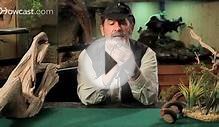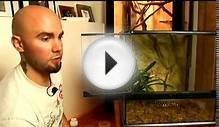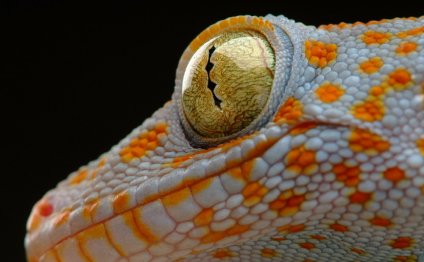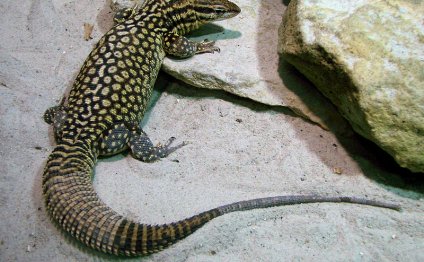
Best reptile to have as a pet
All native reptiles are protected. It is illegal to keep exotic (non-Australian) reptiles in captivity. They must be acquired by a licensed keeper or supplier and cannot be taken from the wild. To keep a reptile as a private keeper you will need to acquire a license of the state or territory wildlife authority, please see the Resources for keeping live animals page and follow the links to your relevant authority.
Getting started
Do your research first. Looking at this web page is a good start and means that you are on the right track. After deciding that you want to keep a reptile, you need to next decide what species you wish to keep. The reptiles that people start with as pets are pythons, dragons, skinks and turtles. Other reptiles such as geckos, legless lizards, monitors, crocodiles and venomous snakes require more knowledge and experience.
The most popular Australian reptiles to keep are the Blue-tongue Lizard, Tiliqua scincoides, and the Central Bearded Dragon, Pogona vitticeps, both of which are interesting and easy to care for. Turtles are also popular pets, however a lot of time and effort needs to go in to water changing and filtration.
There is a list of good books to start with at the bottom of this page. Having read up on reptile keeping you will have to decide what particular animals you want to keep.
Long term Commitment
Remember - a reptile is a long term commitment. Turtles can live for more than 30 years, pythons for more than 15 years and lizards such as Blue-tongues for 20 years. Your pet may well outlive you.
Another consideration is cost, people are often delighted to find out that a Blue-tongue Lizard or Bearded Dragon may cost around $40 to $70 and a Carpet python costs between $90 and $150. However reptiles require proper housing, heating and lighting in order to be cared for properly so although the animal is not very expensive, the initial setup could cost between $500 and $700.
Purchasing a reptile
Once you have decided what kind of reptile you want to keep, have a home set up for it and have received your licence you can start your quest to locate a suitable animal. Reptiles cannot be removed from the wild (or even from the back garden) and can only be obtained from another keeper. In New South Wales reptiles cannot be purchased in a pet shop although they are available through some interstate pet shops.
If you do not know any keepers you should join one of the reptile groups to meet other people with similar interests, to find out more about keeping and to obtain your reptile. Most groups have facilities at meetings for members to advertise animals available or wanted, and some groups also provide this information in their newsletters. Reptiles are also advertised for sale on websites and many interstate reptile suppliers in Victoria, South Australia and Queensland will sell reptiles to NSW keepers. In which case you will need import and export permits.
Housing
Turtles should be kept in a large aquarium with a platform at the top that allows the turtle to dry out and warm up under a heat light. Other reptiles should be kept in a vivarium (dry aquarium) of appropriate size to allow the animal to display normal activity and thermoregulate properly. It can be tempting for new reptile keepers to convert old aquariums into vivariums by fitting secure lids to the top, however the act of reaching in to pick up the reptile and clean the enclosure can become awkward and it much better and safer in the long run to have a vivarium which opens from the front, with hinged or sliding doors. These days there are a variety of wooden, glass and plastic vivariums for sale in many pet supply stores which can be sold with special reptile lighting and heating.
Reptiles require a heat source in order to digest food and remain active. When keeping a reptile in captivity it is import to provide a ‘thermo-gradient’, this is a where the enclosure has a warm and cool end provided by a heater at one end. The difference in temperature creates a gradient which allows the reptile to control its body temperature by simply sitting in the cool or warmer area. By using a thermo-gradient the reptile does not risk being too cold or over heated. A thermo-gradient for most reptiles would be 18oC at the cold end and up to 32oC at the warm end.
Feeding
Reptiles do not eat as much as birds and mammals do and so are relatively cheaper to feed than conventional pets. All animals need to be provided with nutritious food in order to ensure proper growth and remain healthy. Most lizards are omnivores and so require a diverse weekly diet comprising three feeds, one of meat (which can be cat food or kangaroo mince), one of fruit and vegetables and one of live crickets, cockroaches or snails. Snakes and goannas are much easier to feed as they eat entire rodents. In the case of pythons they will only require feeding every two to four weeks and even less during the colder months.
Feeding your reptile should be considered before you purchase your animal or any equipment. Are you okay with feeding live crickets to a lizard or thawing out frozen mice or rats to feed to a snake? It is essential that you are able to take care of all of your animals needs in captivity.
Health
Before purchasing a reptile you should also consider its health requirements. Not all Veterinary clinics have reptile Veterinarians and so you should find out first where you can take your animal in case it requires treatment. It is also more difficult to spot health problems in reptiles than conventional pets, this is where your research into the proper care of your reptile is important.
Further reading
- Online reptile care sheets. Australian Herpetological Society.
- Swan, M. 2006. Keeping and Breeding Australian Pythons. Mike Swan Herp. Books. Lilydale.
- Swan, M. 2008. Keeping and Breeding Australian Lizards. Mike Swan Herp. Books. Lilydale.
- Walls, J. G. 2007. Vivaria Designs. Advanced Vivarium Systems. Mission Viejo.
- Walraven, E. 2004. Care of Australian Wildlife. New Holland. Sydney.
- Weigel, J 1988. Care of Australian Reptiles in Captivity. Reptile Keepers Association, Gosford.
RELATED VIDEO



Share this Post
Related posts
Colorful lizard
A very large species of chameleon that is endemic to forests in eastern and northern Madagascar. They reach up to 68 cm (27…
Read MoreSnakes to have as pets
So, you ve decided to get a pet snake and now you re wondering which kind of snake to get. If so, I promise you will find…
Read More











